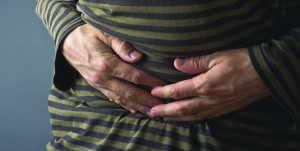 The gallbladder; everyone has one, but that’s not to say everyone needs one. The gallbladder is a hollow organ that is located under the liver. It is hollow, because it works as a storage unit for bile. This bile is received from the liver when is not yet ready to be digested. Then, the bile moves from the gallbladder to the small intestine for the next stage of digestion. This sac shaped organ is about three inches long and two inches wide.
The gallbladder; everyone has one, but that’s not to say everyone needs one. The gallbladder is a hollow organ that is located under the liver. It is hollow, because it works as a storage unit for bile. This bile is received from the liver when is not yet ready to be digested. Then, the bile moves from the gallbladder to the small intestine for the next stage of digestion. This sac shaped organ is about three inches long and two inches wide.
Most people will not have to worry about any issues pertaining to the gallbladder. However, gallbladder diseases and gallstones can be very painful and severe for those who do. Gallstones affect over 25 million Americans. This number has been rising slightly each year. Before having an actual gallbladder attack, it can be difficult to recognize that there is a problem occurring. Generally, a gallbladder attack emerges with sudden chronic pain under the right side of the rib cage or upper abdomen. This pain can flow and radiate to the shoulder, possibly even down the neck. The signs and symptoms are important to identify, so there can be an accurate diagnosis.
Besides the pain, there are a few indicators that may hint at some sort of problem with the organ. The symptoms can disguise themselves as common illness. A frequent sign is prolonged nausea or loss of balance. An initial clue may be excessive burping or gas after eating; this may include actual fluid rising in the esophagus. Having a bitter taste in your mouth, regardless what you have eaten, could mean a blockage in the gallbladder. The fluids would then have nowhere else to go. Abnormalities, such as having pain radiate in the feet or having a sore tongue, can also be telltale signs of gallbladder issues.
Gallstones can be the size of a grain of salt, or as large as a Ping-Pong ball. The larger the stones are, the worse the blockage. Approximately 80% of gallstones are made up of cholesterol. When the organ is filled with more cholesterol than it can dissolve, the excess forms into stones. The other 20% of stones are comprised of calcium salts. These can be the result of liver disease or infections in the organ’s ducts.
There are two ways to treat gallstones; the first is to take medication called Ursodiol. Ursodiol breaks down the gallstone, but can take years of continued use to be effective. This is why it tends to be the less popular option. The second treatment is to undergo surgery. This is accomplished by making small incisions into the abdomen and usually requires only one or two days in the hospital to recover. The surgery has a very high success rate and food can still be effectively digested without the gallbladder. The gallbladder is not vital and many people are living perfectly normal lives without it.
After it has been surgically removed, it is advised that patients keep away from fatty foods that are high in cholesterol. Since the food will not be stored before moving into the small intestine, it can result in more frequent bowel movements. While many people go back to the way they ate before the surgery, their bodies will let them know when they are eating too many fatty foods. Without a gallbladder, it is recommended to eat smaller and smarter portions. Consuming vegetables, fruit, and poultry (which is high in lean protein) is advised. Gradually introducing more fiber into your diet will help reduce bouts of constipation and diarrhea. Living without a gallbladder can require some slight changes in lifestyle, but most people are able to maintain the same quality of life as before the removal.
Lehigh Regional Medical Center is experienced and knowledgeable regarding gallstones and gallbladder surgery. If you have any questions, you can contact them at (239) 369-2101 or visit them at 1500 Lee Blvd. in Lehigh Acres.









